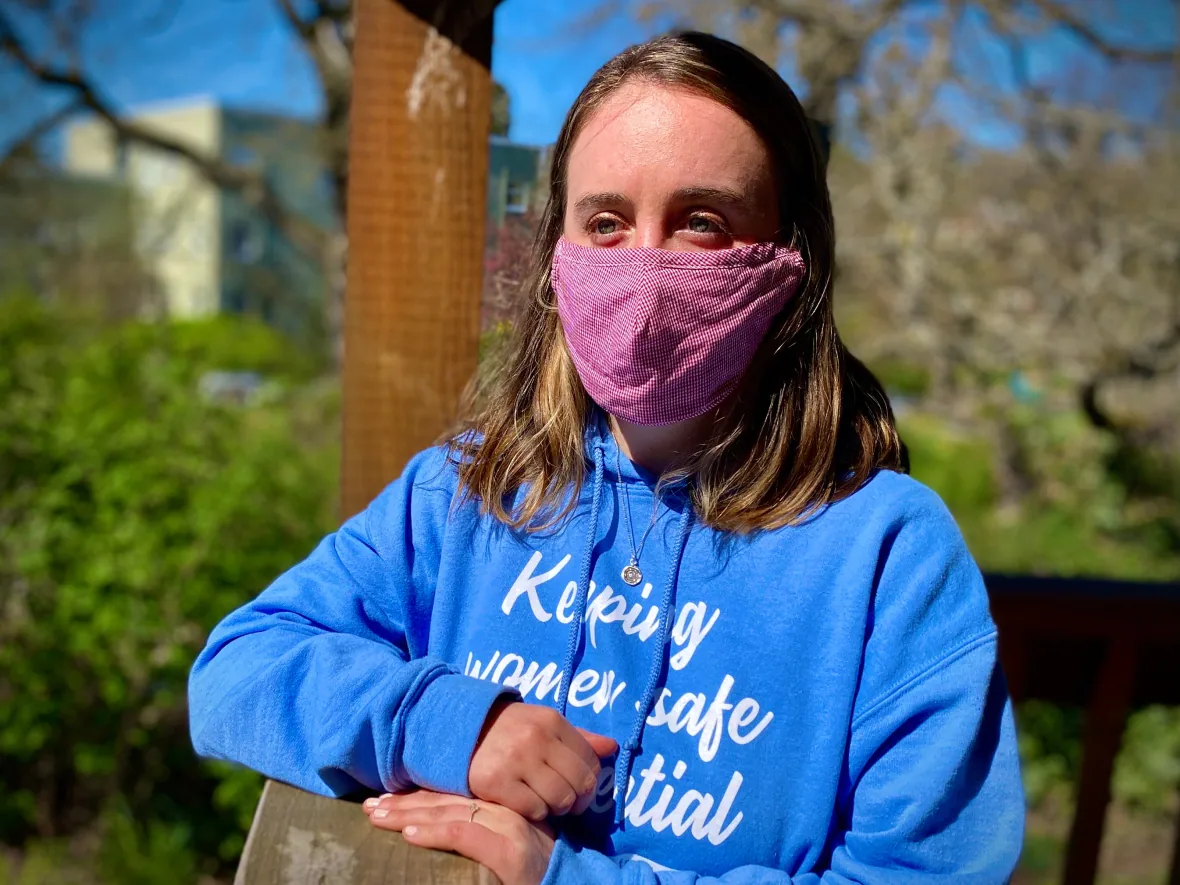Proposed legislation would allow police to intervene in domestic violence cases sooner
Making coercive, controlling behaviour a crime would fill gap in protecting victims.
For Emily, it wasn’t any one thing. She says it was a lot of things that combined to make her marriage unbearable.
Being called selfish when she asked her husband for money to buy herself a winter coat and then returning it because she felt guilty. Having to borrow money to buy diapers for their baby because she was too afraid to ask her husband, who would never disclose how much he earned. Watching important relationships in her life melt away. Being constantly told everything was her fault — and starting to believe it.
“I remember just telling myself it was like I’m going to die if I stay here,” the Edmonton woman said.
Emily, now 40, was never physically assaulted, and none of what happened to her is currently considered criminal behaviour in Canada. But that could change if a private member’s bill before Parliament becomes law.
The proposed legislation would create a new crime in Canada called “coercive control,” which is defined as behaviour by a current or former partner or family member that causes the victim to fear they will be physically harmed, causes their mental health to decline or causes the victim such alarm or distress that there is a substantial adverse affect on their day-to-day activities, such as work, school or their ability to take care of children.
The House of Commons justice committee tabled a report in Parliament Tuesday recommending a national task force study adding coercive control to the Criminal Code and report to the justice minister within a year.

Emily thought that when she left her marriage almost five years ago, she and her ex-husband would part ways amicably. But she said the harassment only got worse, to the point where she was unable to function.
Three and a half years later, Emily found herself jobless, homeless and living in a transition house with her young son.
CBC News cannot identify Emily, or use her real name, because she is involved in custody and divorce proceedings.
Coercive control can take many forms, but the key element is that it encompasses a pattern of behaviour rather than focusing on individual one-off incidents, said Sgt. Mike Darling of the Regional Domestic Violence Unit in Victoria.
The unit investigates the highest-risk domestic violence cases in the Victoria area.
“Using GPS to monitor the location of a victim, isolation from friends and family, that’s a couple of examples that we see a lot in the files that we deal with,” Darling said.
Police lack power to intervene
While not all relationships that meet the coercive control criteria result in physical violence, it can be an important warning sign, said Randall Garrison, the NDP MP from British Columbia who introduced the private member’s bill.
“Overt physical violence and indeed femicide is almost always preceded by coercive, controlling behaviour,” he said.

Garrison introduced the bill last fall after speaking with several police departments serving his Victoria-area riding. They all reported a spike in domestic violence calls after the COVID-19 pandemic started.
Both police and women’s advocates told him that tools were needed to allow police to act sooner.
“The current structure of the Criminal Code simply makes the police walk away, even when they know that situations are potentially very dangerous. They don’t have the authority to intervene. So it creates that tool for earlier intervention,” Garrison said.
Darling recalled one such situation last year when police were powerless to protect a victim who was trying to leave a relationship, which can be a dangerous time.
“The victim wanted to leave the relationship and made attempts to do so, and unfortunately, the circumstances didn’t have a specific criminal offence that was related to, say, intimate partner violence,” he said.
“The current structure of the Criminal Code simply makes the police walk away, even when they know that situations are potentially very dangerous. They don’t have the authority to intervene.– MP Randall Garrison, who introduced private member’s bill
“It really didn’t enable protective conditions to be put in place. And so in that particular case, the offender was actually emboldened to continue to contact the victim and continue with the controlling behaviours that he had demonstrated throughout their relationship.”
‘I was scared to leave my house’
Emily said police in Edmonton were similarly unable to protect her when she left her marriage.
Her ex-husband would send emails and text messages and show up at their son’s daycare when he knew she’d be there, ignoring repeated requests to leave her alone.
She realized when he called one day asking why she wasn’t at work that he’d changed the settings on her phone, allowing him to track her movements.

When she complained to police on two occasions, she was told nothing could be done because the two had joint custody of their son.
Emily said a legal aid lawyer told her to get an antidepressant prescription and figure out a way to co-parent with her ex.
She said she went to more than 70 organizations, documenting her interactions with all of them. None could compel her ex-husband to stop contacting her or showing up places he knew she’d be.
“I started having panic attacks. I was scared to leave my house at some points because of that showing up at different points, like I was always worried … what’s going to happen next?”
Controlling behaviour can be a red flag
Some advocates say making coercive control a crime would protect not only women but also children.
In 2017, Andrew Berry killed his two daughters, six-year-old Chloe and four-year-old Aubrey, on Christmas Day in Victoria.
Testimony from the girls’ mother, Sarah Cotton, detailed a series of threats and intimidation tactics by Berry used on her that the authors of a UBC Law Review article describe as a clear example of coercive control.

Suzanne Morin, the girls’ nanny, can’t talk about the case because Berry is appealing his conviction. But her experience motivated her to study child and youth protection at the University of Victoria.
She said she feels strongly that coercive control should be a Criminal Code offence.
“I really loved working with children and families, but in my experience, I did see failures happening already, and it was really, really frustrating,” she said. “We’re always asking just … how violent is he? Where, from my understanding, we really need to be asking: How controlling is he? Because control is at the root of domestic violence.”
Many forms of evidence
Email or text communications, using technology to track someone’s movements, repeatedly ignoring requests not to contact someone and even interviews with family and friends of the victim are all things that could be used as evidence in coercive control cases, said Darling of the Regional Domestic Violence Unit.
“The obvious thing that could happen is getting the offender on protective conditions. So not being able to have contact with the victim or attend where they live, work or go to school.”
Existing tools such as peace bonds require victims to prove they are afraid of being physically injured, and the pertinent events had to have occurred within six months, so they aren’t always an option, Darling said.
If the bill becomes law, those convicted of coercive control could go to prison for up to five years.
Emily said having what happened to her encapsulated in a criminal offence would have saved her years of emotional and financial devastation.
“I wanted to die for two years because it felt so bad,” she said. “And the fact that one person can do that to another person is so wrong.”


